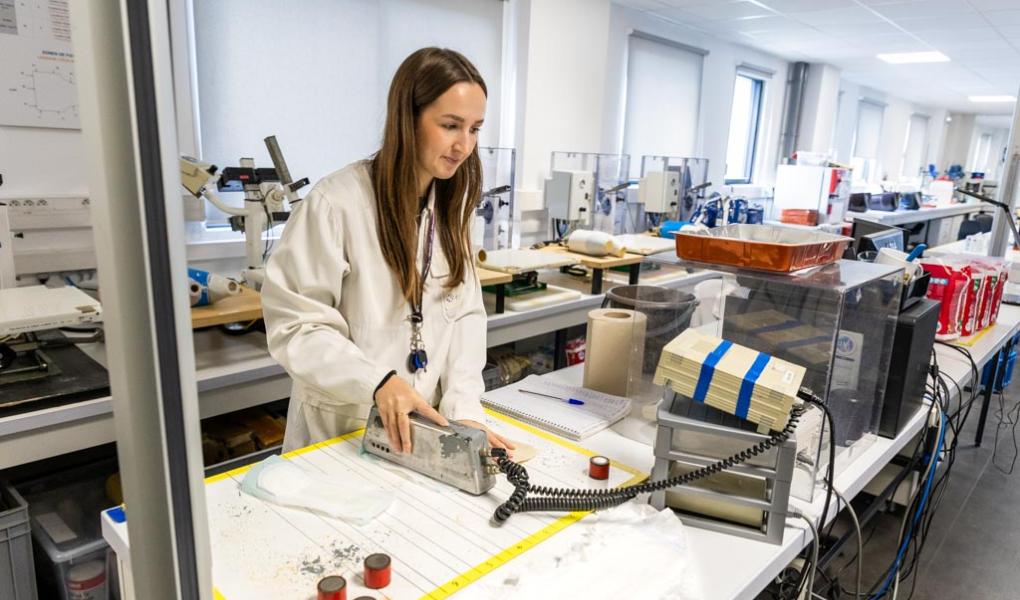The test includes:
- Dimensions and fit
- Absorption capacity before leakage (standing and sitting)
- Penetration time (through the barrier layer) of liquid
- Absorption speed
- Distribution of absorbed liquid
- Dryness against the skin
- Adhesion properties on cotton and polyamide
How the tests are conducted:
Testing absorption capacity and skin dryness
The test evaluates how quickly and how much menstrual fluid the pad can absorb before the risk of leakage, and the pad’s ability to encapsulate the absorbed liquid so it does not feel wet against the skin. The tests simulate use in both sitting and standing positions. Synthetic plasma, dyed blue, was used to simulate menstrual blood.
The test provides detailed data on:
- Absorption speed
- Absorption capacity
- Distribution of absorbed liquid
- Dryness against the skin
Together, these metrics form a measure of the pad’s technical performance.
How the tests are conducted:
Testing absorption capacity and skin dryness
The test evaluates how quickly and how much menstrual fluid the pad can absorb before the risk of leakage, and the pad’s ability to encapsulate the absorbed liquid so it does not feel wet against the skin. The tests simulate use in both sitting and standing positions. Synthetic plasma, dyed blue, was used to simulate menstrual blood.
The test provides detailed data on:
- Absorption speed
- Absorption capacity
- Distribution of absorbed liquid
- Dryness against the skin
Together, these metrics form a measure of the pad’s technical performance.
Testing size, design, and weight
The weight and dimensions of the pads are recorded. The anatomical design and the absorbent surface area is evaluated.
Testing adhesion properties
The width and length of the adhesive strip are measured to determine the pad’s stability during use. Mechanical tests are performed to assess how easy the pad is to remove from the inside of underwear after two hours of simulated use. Additionally, a visual inspection is conducted for adhesive residue and fibers pulled from the underwear on both cotton and polyester materials.
Weighting of test components in the overall score:
- Absorption capacity and skin dryness: 60%
- Size, design, and weight: 20%
- Adhesion properties: 20%
Testing the proportion of renewable material
In addition to performance tests, Testfakta determines how much renewable material the different pads contain. One pad from each package (without the protective adhesive strip) is ground and burned in a special chamber. An IR spectrometer with extreme sensitivity and selectivity then measures the content of the isotope carbon-14, 14C16O2, in the resulting carbon dioxide.
The results show the proportion of the pad’s total carbon content derived from renewable sources, providing a simplified measure of the product’s renewable material content. Superabsorbent powders, often made from fossil materials, contribute to increasing the fossil content.
Read more about RISE’s measurement of biogenic carbon content in materials based on carbon-14 content here.

